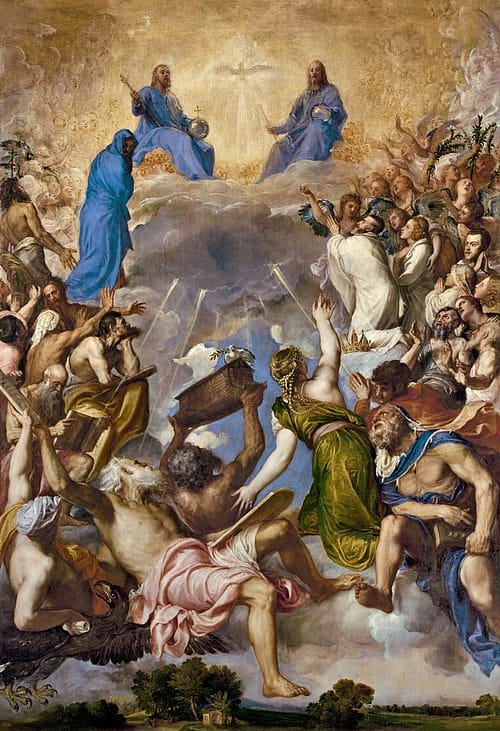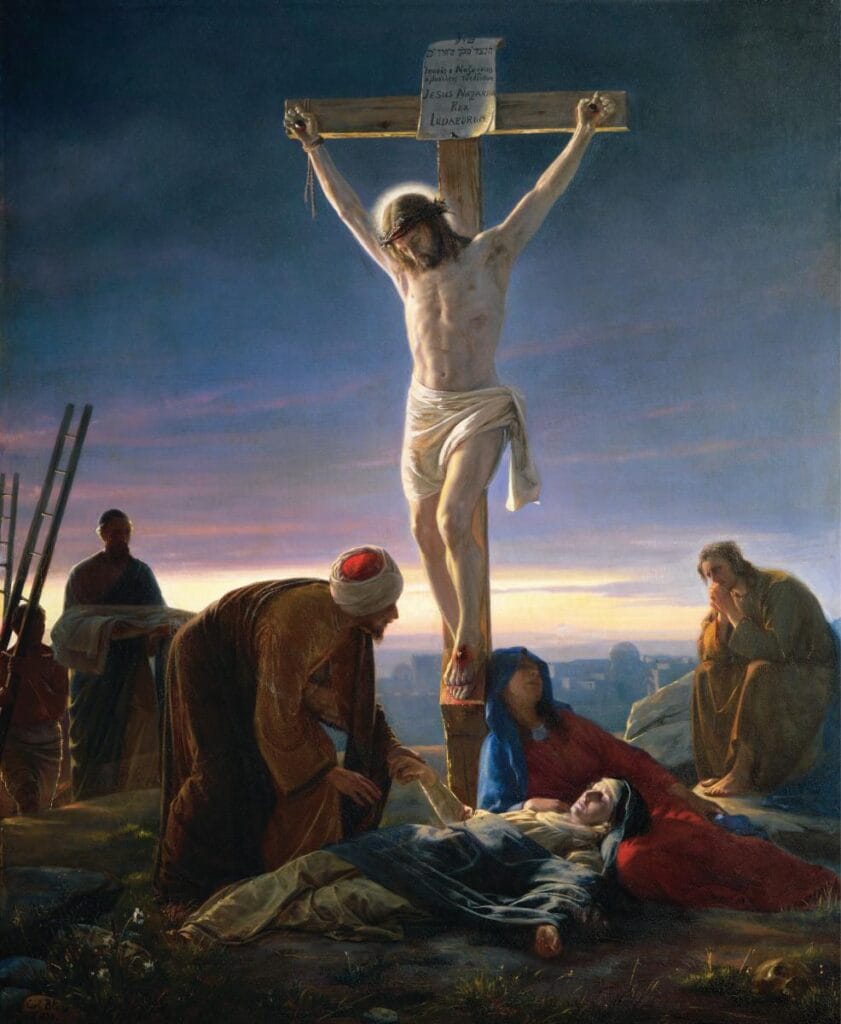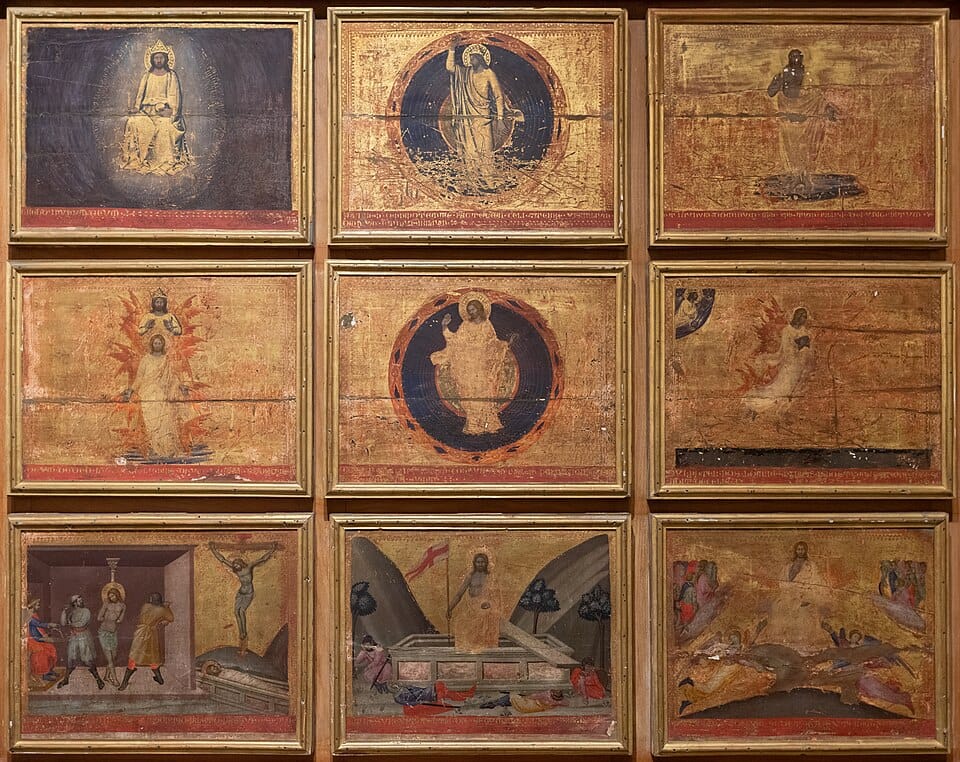Apostles Creed Prayer
Understanding the Rosary Prayers

Introduction to the Apostles Creed Prayer

The Apostles’ Creed is one of the oldest and most loved summaries of the Christian faith. When Catholics begin the Rosary with this Creed, they are not adding a random opening line. They are placing faith at the front door of prayer.
The Rosary is a meditation on the life of Jesus with Mary. The Apostles’ Creed is the Church’s simple, strong confession of who God is, what Christ has done, and what the believer hopes for. It sets the heart in the right place. It reminds the soul that Marian devotion never floats away from Christ. It leads straight into Him.
A Catholic who prays the Apostles’ Creed before the first mystery is, in a quiet way, saying: “This is the faith that guides the mind as it enters these scenes of salvation.”
The Apostles Creed (Full Text)

I believe in God, the Father Almighty,
Creator of heaven and earth;
and in Jesus Christ, His only Son, our Lord,
who was conceived by the Holy Spirit,
born of the Virgin Mary,
suffered under Pontius Pilate,
was crucified, died, and was buried.
He descended into hell;
on the third day He rose again from the dead;
He ascended into heaven,
and is seated at the right hand of God the Father Almighty;
from there He will come to judge the living and the dead.
I believe in the Holy Spirit,
the holy Catholic Church,
the communion of saints,
the forgiveness of sins,
the Resurrection of the body,
and life everlasting.
Amen.
What the Apostles’ Creed Proclaims
The Creed is a compact proclamation of the Gospel. It tells the story of salvation in a form that can be prayed, memorized, and lived. It speaks of the Father who creates, the Son who redeems, and the Holy Ghost who sanctifies. It also professes the Church, the forgiveness of sins, and the hope of eternal life.
In this way, it is both a prayer and a map. It gives a believer the main truths that shape Christian life and guards the heart against a faith that becomes vague.
Biblical Foundations

God the Father Is Almighty and Creator
The Creed’s opening confession echoes the first words of Scripture: “In the beginning God created heaven, and earth” (Gen 1:1, Douay-Rheims). It also reflects the biblical witness that God creates by His word and sustains all things in His power (Ps 32:6; Heb 11:3). The Catechism gathers and explains this faith under the first article of the Creed, especially in its teaching on God the Father and creation (CCC 198–231; CCC 279–301).
Jesus Christ Is the Only Son and Lord
When the Creed professes faith “in Jesus Christ, His only Son, Our Lord,” it echoes the Gospel proclamation of Christ’s unique sonship and divine authority: “For God so loved the world, as to give his only begotten Son” (Jn 3:16) and the apostolic confession that Jesus is Lord (Phil 2:9–11). The Catechism explains this confession within the second article of the Creed, treating who Christ is and why His lordship matters for salvation (CCC 422–451).
The Incarnation Is the Work of the Holy Ghost, and Mary Is Truly Virgin and Mother
The Creed’s words about Christ being “conceived by the Holy Ghost, born of the Virgin Mary” directly reflect the Annunciation and the infancy narratives: the Holy Ghost overshadows Mary, and the Son of God takes flesh in her virginal womb (Lk 1:26–35; Mt 1:18–25; Jn 1:14). The Catechism presents these truths as essential to Catholic faith, especially in its teaching on the Incarnation and Mary’s divine motherhood and virginity (CCC 456–463; CCC 484–507).
The Passion and Resurrection Are the Center of Salvation History
The Creed’s lines on Christ’s suffering, death, burial, and rising again rest on the apostolic kerygma: “Christ died for our sins… and that he was buried, and that he rose again the third day” (1 Cor 15:3–4). The Gospels proclaim this same heart of the faith as the fulfillment of God’s saving plan (Lk 24:46–48). The Catechism treats the Passion and Resurrection as the central saving mysteries that restore mankind to the Father (CCC 571–658).
Christ Reigns in Glory and Will Return to Judge the Living and the Dead
The Creed’s confession of Christ’s Ascension, kingship, and future judgment reflects Scripture’s teaching that the risen Lord was taken up into heaven and will come again in glory (Acts 1:9–11; Mt 25:31–46). This is not a distant threat but a sober and hopeful truth: Christ reigns now and will reveal His justice and mercy at the end of time. The Catechism develops this faith in its treatment of the Ascension, Christ’s present reign, and the final judgment (CCC 659–667; CCC 668–682).
The Holy Ghost Gives Life to the Church
The Creed’s faith in the Holy Ghost and the Church is rooted in Pentecost and the Spirit’s ongoing work in the Body of Christ (Acts 2:1–4; 1 Cor 12:4–13). The Spirit unites, sanctifies, and strengthens believers so that the Church may live and teach the Gospel in every age. The Catechism presents the Holy Ghost as the principal agent of the Church’s life and mission (CCC 683–747; CCC 797–801).
God Forgives Sins and Raises the Body
The Creed’s final affirmations rest on Christ’s own words and promises: He gives the apostles authority to forgive sins (Jn 20:22–23), and He declares that the dead will rise (Jn 5:28–29). Saint Paul’s teaching on the resurrection of the body gives this hope a clear, joyful foundation (1 Cor 15:20–22, 42–44; Rom 8:11). The Catechism gathers these truths in its teaching on forgiveness, the communion of saints, and the resurrection of the body (CCC 976–987; CCC 988–1019).

Historical Origins
The Apostles’ Creed is closely tied to the early Church’s baptismal life. From the first centuries, Christians learned a “rule of faith” that summarized the essentials of belief. This summary was taught to catechumens and confessed at Baptism. Over time, it took a stable form that the Church recognized and handed on.
That history matters because the Creed is not only a statement of doctrine. It is also a reminder that the Christian life begins with a gift: God claims the believer, and the believer answers with faith.
The Apostles’ Creed in the Life of the Church
The Church uses the Creed as a teaching tool and a daily prayer. It is a guardrail for the mind and a comfort for the heart. When confusion rises in the culture, the Creed stays clear. When a Catholic feels weak, the Creed offers a simple return to first truths.
It also teaches that faith is not a private invention. It is received. A Catholic believes with the Church, not apart from her.
The Apostles’ Creed in the Rosary
The opening prayers of the Rosary prepare the soul for contemplation. The Sign of the Cross marks the believer with Christ. The Apostles’ Creed declares the faith of the Church. The Our Father turns the heart to the Father. The Hail Mary honors the woman through whom the Word was made flesh. The Glory Be lifts the mind to the Trinity.
So the Apostles’ Creed is a fitting beginning for a prayer that is entirely Christ-centered. It is the first step into the mysteries because it names the truths the mysteries reveal.
Line by Line Meaning

“I believe in God, the Father Almighty, Creator of heaven and earth.”
This line confesses a personal faith in God who is Father, not a distant force. His power is loving authority. He made all things and holds them in His providence.
“And in Jesus Christ, His only Son, Our Lord.”
Jesus is the eternal Son, not one teacher among many. He is Lord. The believer belongs to Him.
“Who was conceived by the Holy Ghost, born of the Virgin Mary,”
This is the mystery of the Incarnation. The Son of God took real flesh. Mary is truly Virgin and truly Mother.
“Suffered under Pontius Pilate, was crucified, dead, and buried:”
The Creed anchors redemption in real history. Jesus truly suffered and truly died for sinners.
“He descended into hell;”
This proclaims Christ’s victory reaching the dead, opening heaven to the just who awaited the Redeemer.
“the third day He rose again from the dead;”
The Resurrection is the foundation of Christian hope.
“He ascended into heaven, sitteth at the right hand of God the Father Almighty:”
Christ reigns in glory and intercedes for His people.
“From thence He shall come to judge the living and the dead.”
This line calls the soul to sobriety and hope. God’s justice will be revealed, and mercy will be honored.
“I believe in the Holy Ghost,”
The Holy Ghost is a divine Person who sanctifies and strengthens the faithful.
“The holy Catholic Church, the communion of saints,”
God saves a people. The Church is Christ’s Body, and the faithful are united across heaven, earth, and purgatory.
“The forgiveness of sins,”
Forgiveness is real in Christ and poured out through His sacraments, especially Baptism and Confession.
“The resurrection of the body,”
Christian hope is the redemption of the whole person, not a flight from the body.
“And life everlasting. Amen.”
The Creed ends with the hope of heaven and the final victory of grace.
Closing
The Apostles’ Creed is a humble doorway into the Rosary. It is the Church’s ancient confession placed on the lips of ordinary believers. It keeps Marian prayer firmly Christ-centered and gives the soul a clear path into the mysteries of salvation.
A Catholic who begins the Rosary with the Creed begins with Christ. And that is exactly where Mary always leads.
Frequently Asked Questions
The Apostles’ Creed is a short summary of the main truths of the Christian faith: who God is, who Jesus Christ is, what He has done for our salvation, and what the Church believes about the Holy Spirit, the Church, forgiveness, Resurrection, and eternal life. It grew out of the early Church’s baptismal profession of faith and is now used in catechesis, personal prayer, and at the beginning of the Rosary.
The Rosary uses the Apostles’ Creed because it is the ancient baptismal profession of faith, shorter, easier to memorize, and well-suited to personal and family prayer. The Church sees it as a simple, complete summary of what the apostles handed on (CCC 194–196). The Nicene Creed, which is longer and more precise on certain doctrines, is normally used in the liturgy, especially at Sunday Mass. In the Rosary, the Apostles’ Creed lets people of all ages and levels of learning begin with a clear “I believe” before entering the mysteries with Mary.
The Creed is one whole act of faith; a Catholic is called to accept every article, not only the parts that feel easy (CCC 1814). At the same time, many people come with questions or struggles. If someone does not yet understand a line, but honestly wants to believe what the Church teaches, they may still pray the Rosary and quietly ask God for light. What a person should not do is deny an article while saying it. The best stance is humble: “Lord, I may not see this clearly, but I choose to trust what You teach through Your Church.”
Yes. Any baptized Christian who can honestly say the words of the Apostles’ Creed may pray it with the Rosary, even if they are not yet Catholic. The Creed itself is the ancient confession of basic Christian faith in the Trinity, in Christ’s saving work, in the Church, and in eternal life. If a non-Catholic is not sure about a line, they should not lie to God, but they may listen in silence, or say quietly, “Lord, if this is true, show me.” The Rosary has often been a gentle bridge that leads people toward deeper faith and, in some cases, toward full communion with the Church.
First, do not panic or pretend. Many sincere Catholics have questions about parts of the Creed. The right response is honesty and humility. Tell God plainly, “Lord, I want to believe what You teach. Help me with this line.” Then seek light: read the Catechism passage on that article, ask a good priest or catechist, and bring it to confession or spiritual direction if needed. There is a difference between saying, “I refuse to believe this,” and “I do not yet understand, but I am willing.” The second is already an act of faith and trust.
Links

Charles Rogers is a resident of South Carolina and a retired computer programmer by trade. Raised in various Christian denominations, he always believed in Jesus Christ. In 2012, he began experiencing authentic spiritual encounters with the Blessed Virgin Mary, which led him on a seven-year journey at her hand, that included alcohol addiction, a widow maker heart attack and death and conversion to the Catholic Faith. He is the exclusive author and owner of Two Percent Survival, a website dedicated to and created in honor of the Holy Mother. Feel free to email Charles at twopercentsurvival@gmail.com.

We strive to provide the most complete and highest quality material we can for you, our readers. Although not perfect, it is our desire and prayer that you benefit from our efforts.
Lorem ipsum dolor sit amet, consectetur adipiscing elit. Ut elit tellus, luctus nec ullamcorper mattis, pulvinar dapibus leo.

